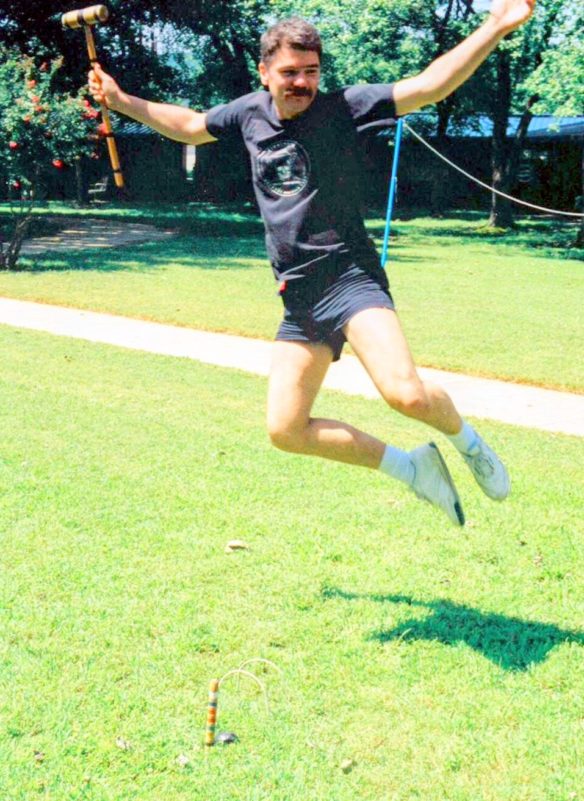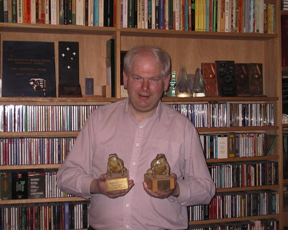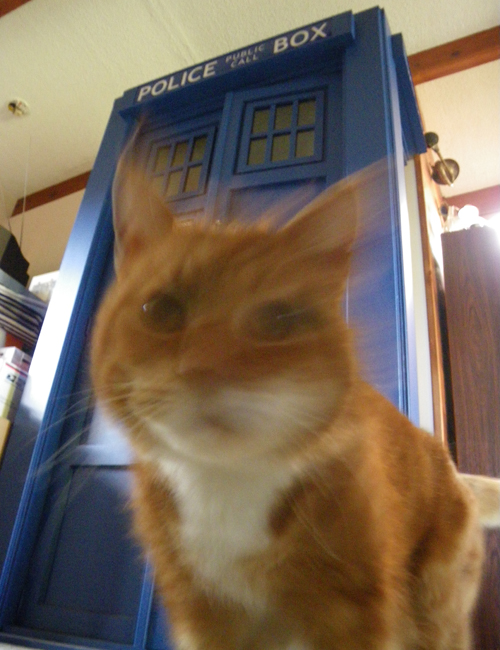
By Rich Lynch: It’s been 30 years since the passing of my friend Roger Weddall. I doubt very many of you reading this had ever met him and I wouldn’t be surprised, actually, if most of you haven’t even heard of him. Thirty years is a long time and the demographics of fandom has changed a lot. So let me tell you a little bit about him.
To begin with, Roger was very much an actifan during the 1980s and very early 1990s. He was a member of the Melbourne Science Fiction Club but his fan activities extended far beyond the borders of Australia. Back then the Internet was not the prime means, as it is today, for fans separated by large distances to interact with each other. Instead, we communicated with each other mostly by letters and through fanzines which were distributed the old-school way: by surface mail. And that’s how I met him.
Back then, my wife Nicki and I were publishing a general interest fanzine, Mimosa, and had been sending it out as trade for other fanzines we’d receive in the mail. One of them was the MSFC fanzine Thyme, of which Roger was co-editor. And it was a very pleasant surprise for us to receive a long letter from him, in the first part of 1987, that commented favorably on our second issue. A lot of back-and-forth correspondence followed and a burgeoning friendship developed.
It wasn’t until 1992 that Nicki and I finally got to meet him in person. That year Roger had been elected the 1992 representative of the Down Under Fan Fund (DUFF) and came to the United States for the Worldcon, Magicon, which was held in Orlando, Florida. But the weekend before that he attended a small fan get-together, the Jophan Family Reunion, in Birmingham, Alabama. And it was there that we learned that he was seriously ill with lymphoma. He’d intended to include a stop in Maryland to stay with us as part of his DUFF trip but the disease had caused him to change his plans so that he could return to Australia immediately after the Worldcon to continue his chemotherapy treatments.
Roger had assured us that the disease was controllable – had been controlled, in fact – and that he fully intended to return to North America in 1993 to continue his DUFF excursion. But that turned out to be far too optimistic. When we said good-bye to each other at the conclusion of Magicon, Nicki and I had been hopeful that we’d see him again but fearful that we wouldn’t. And a very few months later, on the night of December 3rd, we received the long-distance telephone call we were dreading would happen, the news of Roger’s death.
Nicki and I were fortunate that in the relatively short time we knew Roger we managed to accumulate many memories of and about him that we’ve continued to treasure: Roger had an unpredictable side where he would do memorable things from out of the blue from time to time, like his ‘telephone call from the future’ to us one New Year’s Eve (he was on the other side of the International Date Line, where the new year had already arrived). We also knew Roger as someone who would gladly go out of his way to do something for you that he knew you wanted; several times we’d received letters from him where the envelope had been almost completely covered with different postage stamps – all because he knew that Nicki (at that time) collected Australian postage stamps.
One other thing about Roger was his hyperactiveness during the Jophan Family Reunion and at Magicon the following week. From what I observed, hardly anybody had the stamina to keep up with him. And that’s the way I remember him most – full of life and enthusiasm. Roger was that special kind of person who could brighten up your day whenever he wrote or called and the world has been a less friendly place without him. To say that I’ve been missing him these past three decades is a huge understatement.
I’ll end this remembrance by describing something that happened during the Jophan Family Reunion, a little anecdote that really shows off Roger’s personality. Roger had been hosted by our mutual friend Charlotte Proctor during his stay in Birmingham and on the final evening of the convention Nicki and me, Roger, and Charlotte went out to dinner at a shopping mall restaurant. Afterwards, just as we were all back in her car and ready to leave, Charlotte suddenly remembered that she’d meant to bring the baked potato from her meal back home for her husband Jerry to eat later. She’d been ready to just forget the whole thing, but Roger said, “Wait! I’ll get it for you!” Charlotte drove to the restaurant entrance and, as the three of us hummed the theme music from Mission: Impossible, Roger raced into the side entrance of the restaurant then, a moment later, came running back out again triumphantly holding up the foil-wrapped potato. He threw himself into the car and we sped off. It was all done so slickly that the restaurant staff didn’t even realize that they had been victimized by The Great Potato Caper. It was truly a moment that fan historians of the future will marvel at.
I’m sorry that most of you reading this never got a chance to meet Roger Weddall. I know you would have liked him.



